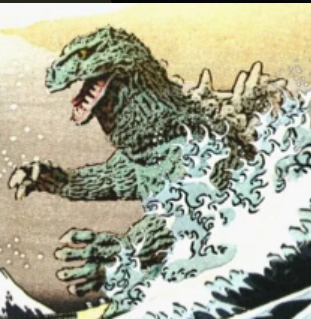Hey comrades, can someone please enlighten me on the holes that I have on my knowledge of China. I know that China currently has a restricted bourgeoisie class to be able to get enough capital to modernize the entire country. And that makes me wonder, if China has plans to eventually get rid of their bourgeoisie once it achieves it target goal. Does it have ever set a date or a specific plan on this?
There is no plan for this at the moment, depending on what you mean by ‘plan’.
Obviously the bourgeoisie will disappear at some point between now and a classless society, but the questions of how and when are not set.
Recently and for the forseeable future, the wealth gap issue is being addressed by raising the wealth of the working class rather than lowering the wealth of the boojees. The boojees feel it where those things overlap, though, such as wage protection and price control.
I sure don’t know, but I’m hoping the book I ordered last week will enlighten me: The East is Still Red – Chinese Socialism in the 21st Century
Also available on Anna’s Archive. :)
What is this?
annas-archive.org! The place where books multiply! :D
Thanks!
Chinese Marxist here, be ready for a long post explaining the direction of the Chinese economy
PART 1: There is no Bourgeoisie in China
First off, the “bourgeoisie” you mention are not “bourgeoisie” in the traditional sense, here’s why, to be bourgoeisie you need 3 things:
- Ownership of the instruments of labor (Tools, infrastructure, factories)
- Land and natural resources.
You cannot legally own land in China, all land is held by the state or rural cooperatives. This by extension, the way private companies come across this land, is by renting the land from the state for a fixed period of time. If the time is up, the land is confiscated by the local government or the private company repurchases the land at market value or the fixed price.
So, 50% of what makes the bourgeoisie, the bourgeoisie in China simply doesn’t exist. Therefore the Bourgeoisie as a class is either: A) Underdeveloped and deliberately crippled B) Simply a seperate class
PART 2: Instances of the State ownership/reposession
However, there have been cases where the land has been arbitrarily siezed on the requirements of the Central Government.
EXAMPLE 1: 2008 (Link: https://archive.ph/rCN1K#selection-489.0-506.0)
The government of China’s coal-rich Shanxi Province, southwest of Beijing, is trying to drive almost all private mine owners out of business, forcing more than 1,500 mines to shut down or sell out to state-owned enterprises at prices so low, coal bosses say, that some may go bankrupt
The national government has been laying the groundwork for the takeover or shutdown of small mines for the last few years, beginning with Shanxi, where a wave of mine disasters contributed to the sackings last year of the provincial governor and numerous lower-level officials
The government-owned mines have better safety records, accounting for most official production but only 15% of accidents, according to a FORBES tally of data from 2007 to the present.
The majority of the Coal in China was administered by state ownership, but the contracted out land to private coal mines (of which the majority are small in scale) was forcefully reaqusitioned in the interest of public safety. Therefore, it is not uncommon for the reaquisition of land and subsequently the instruments of labor, were seized.
EXAMPLE 2: 2016 - 2021
(Link:https://www.pwccn.com/zh/blog/state-owned-enterprise-soe/analysis-on-the-14th-five-year-plan-of-local-soe-feb2022.html) From 2019 to 2021, more than 110 A-share listed private enterprises were acquired by local state-owned system enterprises, with a total market value of more than 600 billion yuan.
(Source: Li Yifang (2019) Increase in a share equity transfer: reason, future, and policy recommendations. ( A股股权转让大增的特征、原因及政策建议 ) Shanghai Securities Research Report (上证研报))
According to formal reports from the Shanghai and Shenzhen stock exchanges, these kinds of transfers are not large in number, but the trend is a significant one. Since 2016, listed firms have changed their controlling owner from private to state at an average rate of ten per year. This number was as high as 23 firms in 2018. Of all of the listed firms that undergo major ownership reforms, the clear trend in 2017 and 2018 is that most of these firms are private, not state-owned (306 in 2018, double the number of privately owned firms to undergo equity transfer in 2017)
For context, to be listed on the Shanghai and Shenzhen stock exchanges (which were the only 2 stock exchanges up until 2021), you need a requirement of operating income/revenue of 100 million RMB per year, accumulative over the course of 3 years of 300 million. These are essentially the largest 3,000 enterprises in China, pretty much every single enterprise that isn’t wholly owned by the Central Government but is incredibly large in terms of employment, revenue and profits are all listed. All of the largest enterprises in China are listed on the stock exchanges.
PART 3: The future direction of the Chinese national economy
China is aiming to continue to develop and become a Mixed Ownership Economy. Most of the largest non-Wholly Owned SOE enterprises in China are enterprises of mixed ownership, comprised of Joint-Stock, Shareholding and Limited Liability Corporations. Mixed ownership enterprises can be dominated by state ownership or state controlled due to the distribution of shares. The plan is to slowly phase out the existence of purely private owned enterprises in the middle size and upper sizes, with the injection of state capital and state shares into these enterprises. To quote Chinese marxist academics on this topic,
Mixed-ownership economy with the cross shareholding and mutual integration of state-owned capital, collective capital and non-public capital is the important realization form of the basic economic system, and it is conducive to the function enlargement, maintenance and appreciation, and competitiveness enhancement of state-owned capital as well as to making the best of capital of various ownership, the mutual promotion and joint development. It is not to carry out the “privatization”, “denationalization” or “elimination of state-owned enterprises”, but a good opportunity for state-owned enterprises to promote the national industrial upgrading, optimize the industrial structure and enhance the control in the key fields.
- (X Zhang, & X Chang, The Logic of Economic Reform in China)
This kinds of goes over how many on the paper “private” companies or to be more specific, “publically listed companies” though are not formally considered state owned or state controlled. Are still functionally state owned enterprises, one example of this would be:
Sichuan Changhong Electric, the largest domestic Television producer in China, formally considered a Joint stick limited liability corporation, otherwise classified as an enterprise of mixed ownership, however if you look at the top 10 shareholders by size in this enterprise.
23.23% which is the largest share is held by the Mianyang State Owned Asset Supervision & Mgt Commission. The other 9 largest shareholders do not own more than 0.7% of the total stock, with the 9 largest shareholders holding a total of roughly 3%. The other 75% of shares are free floating stocks, so they’re owned by regular people who invest in the stock market.
- (Source: Political and economic incentives of government in partial privatization, Page 19 - 21, by Zhaohua Li and Takeshi Yamada)
A study spanning from 1998 to 2007 found that 78% of the 11,780 sample firms on the stock market could be classified as state owned enterprises or state controlled enterprises, despite a decent sum being formally named “private enterprises”. These State controlled enterprises hired more workers and were primarily concentrated in industrial ventures. 95% of firms whose primarily business was mining and the utilities industries were made up of these state controlled enterprises. 90% of transporting, warehousing and social service industries were made up of these state controlled enterprises. The average ownership stake in the hand of the state was 40%, the largest shareholder (in this case the state) tends to hold substantially larger proportion of shares than other shareholders.
- (Source: Grasp the Large, Let Go of the Small: The Transformation of the State Sector in China By CHANG-TAI HSIEH and ZHENG (MICHAEL) SONG, Page 7-8)
In 2012, 50% of State Controlled Firms (More than, or exactly 50% state ownership) are registered as “Private firms”, this includes foreign firms where the classification as 30% of the shares by a foreign entity makes it foreign funded. For example, the joint ventures of the SAIC with Volkswagen, SAIC-Volkswagen are registered as foreign firms, even though 50% of ownership is held by the SAIC. Roughly 2/3 of all firms were directly or indirectly owned by the SASAC.
PART 4: SUMMARY
The bourgeoisie in china are highly underdeveloped or do not exist entirely, due to the lack of private land ownership. Certain bourgeoisie individuals who step out of line are liquidated/nationalized. China’s economic plan is the development of a mixed ownership economy, eliminating private enterprises to replace them with enterprises of mixed ownership, with state capital, cooperative capital, employee capital and private capital mixed together. With state capital being the most prominent/mainstay of the economy, like in the example of Sichuan Changhong electric, particularly in the “Commanding Heights”
I hope this helps answer your question





